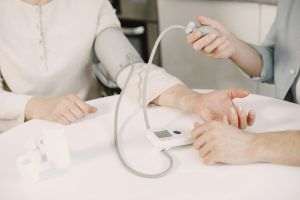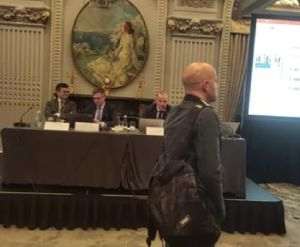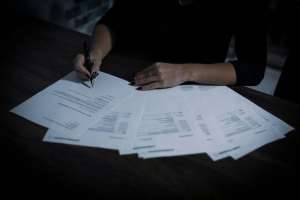• Despite the government's significant efforts, the SME sector is seeing a stagnation, perhaps even a contraction
• Without a decisive change in vision and approach, even if the resources reach the SMEs - they will continue to be wasted
Reporter: How do you view the microfinancing of SMEs in Romania? Is it developed enough or not? How is the access of SMEs to microfinancing and how big are the borrowing costs?
Peter Barta: Microlending is one of the financing sources which has seen a strong promotion in Europe, over the last decade, particularly in the poorer countries. The microlending sector has evolved quickly in Romania as well. It has gained importance starting with the year 2005, after the introduction of the law 240/2005 concerning microfinancing, has allowed the creation of the regulatory framework needed for the organization and functioning of microfinancing companies. This has encouraged the development of financial intermediaries and of microlending activities, especially by accessing microfinancing facilities made available by the European Commission (EC) and the European Investment Fund (FEI). Loans capped at 25,000 Euros are granted through the authorized microfinancing institutions to microenterprises or to distressed individuals, which want to start their own business and don't have access to traditional bank loans.
It can be said that at the present time, microlending in Romania is a well developed activity, even compared to other European countries. Recent data concerning the JASMINE European Microlending facility shows that out of the 49 microfinancing providers in the European Union (EU), accredited by the FEI to implement the project, 9 are located in Romania (Banca Carpatica, FAER, Express Finance, Opportunity Microcredit România (OMRO), LAM, The Agency for the Implementation of Projects and Programs for SMEs (AIPPIMM), RoCredit and ROMCOM). Only Germany has more accredited providers (11), but countries such as France, Holland, Belgium only have one microlender accredited as part of JASMINE.
It must be considered that microfinancing develops more in those countries where it appears as an attempt to make up for the difficulty in obtaining bank loans.
On the other hand, the legislative framework which authorizes the microfinancing institutions in Romania has been improved, and the microfinancing activity is regulated by the National Bank of Romania (NBR). The number of suppliers of microloans has continuously grown, to about 200. So did the portfolio of microloans, especially those for agriculture and local industry, whose small-sized firms are almost completely excluded from other forms of financing. We could mention here 3 important Romanian microloan suppliers, which over the last 2 years alone have accessed the European Progress facility managed by FEI: Banca Transilvania with a microlending fund of 7.5 million Euros, the Rural Financing Society FAER with 1 million Euros and Patria Credit with 8 million Euros, which fund over 10,000 small companies in this manner.
Even though the interest rates can be far higher than those of the average bank loans, microfinancing is first of all advantageous through the easy access to financing and the assistance the microlenders provide to certain disadvantaged categories.
Reporter: What can the Romanian state do to support the financing of SMEs?
Peter Barta: The state can't intervene in the commercial banks' lending policies, but it does have the ability to stimulate consolidation or the development of other financial instruments dedicated to SMEs, such as the guarantee and counterguarantee of the bank loans, the risk capital for various development stages of a company or for innovating firms. In that regard, increasing the funding available to the National Fund for the Guarantee of Loans for Small and Medium Enterprises (FNGCIMM) or the development of the risk funds through the Sectoral Operational Program - Increase in Economic Competitiveness (POS CCE) or the mobilization of other forms of public-private participation could represent solutions to that problem.
But, of course, the state, through its concerned institutions, plays an important part in managing the grants for SMEs from the state budget and from the European funds. Unfortunately, the experience so far shows that, despite the government's significant efforts, the SME sector is seeing a stagnation, perhaps even a contraction, in terms of the number of existing companies as well as in terms of the competitiveness and the added value created in the economy.
Statistical data (the National Office of the Trade Registry) shows a decrease in the number of active SMEs from 485,400 in 2008 to 423,200 in 2010. The number of employees fell even more dramatically from 2,800,000 in 2008 to 2,424,000 in 2010. Over the same period, the turnover reported by the SME sector shrank 5%. Besides, in the last report of the European Commission, "EU SMEs in 2012 at the crossroads", published in September 2012, Romanian SMEs seem to have the most unfavorable situation when it comes to the negative growth rate of the number of employees and the added value, compared to other countries. These negative developments can, to a point, be explained using the strong impact of the economic crisis on the SME sector, which had seen an upward trend until 2008. Still the vulnerability of this sector remains, even though, for more than a decade, the financial support from the state budget and from European sources increased progressively, can be explained through the absence of a consolidated entrepreneurial ecosystem, with everything it involves: sectoral systems (a rebuilding of the value chains) and regional chains (territorial effects).
Without a decisive shift in vision and approach, starting from the assessment of the situation, to redefining the strategy and the funding programs for SMEs, with focusing on the sectors where Romanian companies can be competitive, even if the resources reach the SMEs - they will continue to be wasted, without any progress being achieved.
Reporter: What business opportunities does the European market provide for SMEs and more specifically, what economic sectors? What should a Romanian SME do to access other European markets?
Peter Barta: The European market is unified and regulated by common standards. There are individual companies in Romania which are successful in exports, and others have become part of the pan-European chains of suppliers, which helped them to restructure and increase their exports.
Theoretically, any Romanian or European company has access to the European market, and this is obvious if we look at the domestic market: how many products in the domestic supermarkets are Romanian and how many are foreign? Romanian products should be able to penetrate the foreign markets, just like the foreign ones do on our market. The essential condition remains meeting the European quality standards and of course, the competitive prices, which involves resources and productivity.
SMEs should first of all be concerned with improving their quality system and optimizing their costs; at the same time, they should adequately promote themselves. And for that, they've had a lot of European and Romanian funds available.
Another thing they could do would be for companies operating in the same sector to associate by creating clusters or SME associations, in order to increase their bargaining power.
Until 2007, about 20 million Euros have been allocated from the state budget for the national program to promote the exports of SMEs, when the financial support became the responsibility of POS CCE, with an allocation of 70 million Euros for the 2007-2013 period. SMEs had funds available to develop their exports through specific activities such as: attending international fairs and exhibitions, participating in economic missions abroad, making printed/engraved materials for promotion or for online advertising and other services related to new domestic markets. There are hundreds of SMEs which tapped these opportunities by applying for them under the available financing schemes, and many of the beneficiaries are among the 5.5% exporting SMEs.
However, others were not capable of dealing with the strict rules and criteria which are part of accessing the European funds, compared to the less rigorous rules which were in effect prior to that. Still, the activities for promoting exports, should not rely on financial support from the state alone. The chambers of commerce, the professional associations or other organizations representing SMEs must play an important part by supporting companies to participate in actions of cooperation and economic missions involving foreign partners.
We can also talk about a lack of appetite for cooperation in networks in order to exploit the opportunities to compete in the market which are available. This kind of association structures and their specific networking instruments, IT portals, common participation in fairs and exhibitions are far more important in the life of companies from other countries.
Reporter: How can Romanian SMEs try to access financing from abroad?
Peter Barta: With very little exceptions, such as the Framework Research Program of the European Union FP7, foreign funding is not granted to an SME directly, but rather through the authorities from the territory of the state in question. It is the case of operational programs by which structural funds were granted since 2007 and until 2013. Once approved by the European Commission, they are managed by the management authorities or by other Romanian structures involved. The financial support is granted through calls for projects launched by the national or regional authorities based on the criteria included in the applicants' guides. The money is paid by the beneficiaries, or in some cases by the Romanian state, which are then compensated by the European Commission.
If we refer to the various lending facilities for SMEs made available by the European Investment Bank (EIB) or FEI (the JASMINE and PROGRESS facilities), are not granted directly to companies, through the financial intermediaries, banks or other institutions accredited in Romania, which works with the EIB and the FEI. Other lenders present in Romania such as the World Bank, the Financial Mechanism of the European Economic Area or the Norwegian Financial Mechanism present in Romania operate based on similar principles.
Another lesser known method of the Romanian environment is the participation in events such as European Venture Contest, where companies can present their business ideas and obtain funding from various investment funds. It needs to be mentioned that this type of funding is not for everybody, because it involves quite a significant effort in clearly defining the business, the elaboration of a long term strategy or the performing of intense research and innovation activities, but it can be a potential option.
Reporter: Thank you!


















































